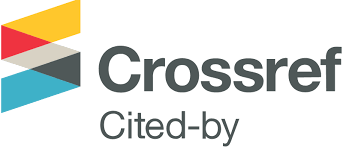Bromination of quinolin-4(1H)-ones as an efficient strategy for the development of new antibacterial agents
DOI:
https://doi.org/10.24959/ophcj.20.207750Keywords:
quinolin-4-one, 2-alkylquinolin-4(1H)-ones, bromination, 4Qs, quorum sensing, antibiotic resistance, AMRAbstract
Aim. To study the reactivity of 2-methylquinolin-4(1H)-ones in the bromination reaction in order to develop target-oriented methods for the synthesis of compounds that can affect the Quorum sensing processes of various bacterial communities.
Results and discussion. Features of the reactivity of 2-methylquinoline-4(1H)-ones in the bromination reaction using two halogenating reagents – molecular bromine and N-bromosuccinimide (NBS) have been studied. It has been shown that in both cases the direction of halogenation depends on the presence and nature of the substituent in position C(3) of the heterocycle. It has been found that variations in reagents, solvents, and catalysts did not lead to changes in the qualitative composition of the reaction products and only slightly affected their yields.
Experimental part. The synthesis of bromo derivatives of quinoline-4(1H)-ones was carried out by acting on the initial compounds of a molecular bromine or NBS in glacial acetic acid or chloroform, respectively, in the presence of catalytic amounts of benzoyl peroxide or without it. The structure of the compounds synthesized was proven by the data of 1H NMR spectroscopy and elemental analysis.
Conclusions. The features of the bromination reaction in the series of 3-substituted 2-methylquinolin-4(1H)-ones have been studied. It has been found that depending on the nature of the substituent in position C(3) of quinolone, bromination occurs on the methyl group of position C(2), or on positions C(3) and C(6) of the heterocycle. In the case of 3-benzyl-2-methylquinolin-4(1H)-one, bromination takes place on the methyl group of position C(2) of quinolone to form 3-benzyl-2-(bromomethyl)quinolin-4(1H)-one, which can be used for developing a new class of drugs designed to affect the virulence factors of microorganisms. The reactivity of 3-benzyl-2-(bromomethyl)-quinolin-4(1H)-one has been studied on the example of n-hexylamine alkylation.
Received: 10.07.2020
Revised: 29.10.2020
Accepted: 14.11.2020
Supporting Agencies
- The theme of Ministry of Health of Ukraine «Molecular design and purposeful synthesis of new biologically active organic compounds and their focused combinatorial libraries» (№0114U000944
- 2014 – 2020 years)
Downloads
References
- Chandler, C. I. R. Current accounts of antimicrobial resistance: stabilisation, individualisation and antibiotics as infrastructure. Palgrave Communications 2019, 5 (1), 1 – 13. https://doi.org/10.1057/s41599-019-0263-4.
- Bassetti, M.; Poulakou, G.; Ruppe, E.; Bouza, E.; Van Hal, S. J.; Brink, A. Antimicrobial resistance in the next 30 years, humankind, bugs and drugs: a visionary approach. Intensive Care Medicine 2017, 43 (10), 1464 – 1475. https://doi.org/10.1007/s00134-017-4878-x.
- WHO. Global Action Plan on Antimicrobial Resistance. http://apps.who.int/iris/bitstream/handle/10665/193736/9789241509763_eng.pdf?sequence=1 (accessed 12 Sep 2020).
- WHO. No Time to Wait: Securing the Future From Drug-resistant Infections. Report to the Secretary-general of the United Nations. https://www.who.int/antimicrobial-resistance/interagency-coordination-group/IACG_final_report_EN.pdf?ua=1 (accessed 19 Sep 2020).
- Cassini, A.; Högberg, L. D.; Plachouras, D.; Quattrocchi, A.; Hoxha, A.; Simonsen, G. S.; Colomb-Cotinat, M.; Kretzschmar, M. E.; Devleesschauwer, B.; Cecchini, M.; Ouakrim, D. A.; Oliveira, T. C.; Struelens, M. J.; Suetens, C.; Monnet, D. L.; Strauss, R.; Mertens, K.; Struyf, T.; Catry, B.; Latour, K.;
- Ivanov, I. N.; Dobreva, E. G.; Tambic Andraševic, A.; Soprek, S.; Budimir, A.; Paphitou, N.; Žemlicková, H.; Schytte Olsen, S.; Wolff Sönksen, U.; Märtin, P.; Ivanova, M.; Lyytikäinen, O.; Jalava, J.; Coignard, B.; Eckmanns, T.; Abu Sin, M.; Haller, S.; Daikos, G. L.; Gikas, A.; Tsiodras, S.; Kontopidou, F.; Tóth, Á.;
- Hajdu, Á.; Guólaugsson, Ó.; Kristinsson, K. G.; Murchan, S.; Burns, K.; Pezzotti, P.; Gagliotti, C.; Dumpis, U.; Liuimiene, A.; Perrin, M.; Borg, M. A.; de Greeff, S. C.; Monen, J. C. M.; Koek, M. B. G.; Elstrøm, P.; Zabicka, D.; Deptula, A.; Hryniewicz, W.; Caniça, M.; Nogueira, P. J.; Fernandes, P. A.; Manageiro, V.;
- Popescu, G. A.; Serban, R. I.; Schréterová, E.; Litvová, S.; Štefkovicová, M.; Kolman, J.; Klavs, I.; Korošec, A.; Aracil, B.; Asensio, A.; Pérez-Vázquez, M.; Billström, H.; Larsson, S.; Reilly, J. S.; Johnson, A.; Hopkins, S. Attributable deaths and disability-adjusted life-years caused by infections with antibiotic-resistant bacteria in the EU and the European Economic Area in 2015: a population-level modelling analysis. The Lancet Infectious Diseases 2019, 19 (1), 56 – 66. https://doi.org/10.1016/S1473-3099(18)30605-4.
- Tacconelli, E.; Pezzani, M. D. Public health burden of antimicrobial resistance in Europe. The Lancet Infectious Diseases 2019, 19 (1), 4 – 6. https://doi.org/10.1016/S1473-3099(18)30648-0.
- Dickey, S. W.; Cheung, G. Y. C.; Otto, M. Different drugs for bad bugs: antivirulence strategies in the age of antibiotic resistance. Nature Reviews Drug Discovery 2017, 16 (7), 457 – 471. https://doi.org/10.1038/nrd.2017.23.
- Calvert, M. B.; Jumde, V. R.; Titz, A. Beilstein J. Org. Chem. 2018, 14, 2607 – 2617. https://doi.org/10.3762/bjoc.14.239.
- Makrina, T. Benefits and Challenges of Antivirulence Antimicrobials at the Dawn of the Post-Antibiotic Era. Drug Delivery Letters 2016, 6 (1), 30 – 37. http://dx.doi.org/10.2174/2210303106666160506120057.
- Heras, B.; Scanlon, M. J.; Martin, J. L. Targeting virulence not viability in the search for future antibacterials. British Journal of Clinical Pharmacology 2015, 79 (2), 208 – 215. https://doi.org/10.1111/bcp.12356.
- Defoirdt, T. Quorum-Sensing Systems as Targets for Antivirulence Therapy. Trends in Microbiology 2018, 26 (4), 313 – 328. https://doi.org/10.1016/j.tim.2017.10.005.
- Abisado, R. G.; Benomar, S.; Klaus, J. R.; Dandekar, A. A.; Chandler, J. R. Bacterial Quorum Sensing and Microbial Community Interactions. mBio 2018, 9 (3), e02331-17. https://doi.org/10.1128/mBio.02331-17.
- Xu, G.-M. Relationships between the Regulatory Systems of Quorum Sensing and Multidrug Resistance. Frontiers in Microbiology 2016, 7 (958). https://doi.org/10.3389/fmicb.2016.00958.
- Paluch, E.; Rewak-Soroczyńska, J.; Jędrusik, I.; Mazurkiewicz, E.; Jermakow, K. Prevention of Biofilm Formation by Quorum Quenching. Applied Microbiology and Biotechnology 2020, 104 (5), 1871 – 1881. https://doi.org/10.1007/s00253-020-10349-w.
- Huse, H.; Whiteley, M. 4-Quinolones: Smart Phones of the Microbial World. Chem. Rev. 2011, 111 (1), 152-159. https://doi.org/10.1021/cr100063u.
- Reitsema, R. H. The Chemistry of 4-Hydroxyquinolines. Chem. Rev. 1948, 43 (1), 43 – 68. https://doi.org/10.1021/cr60134a002.
- Vandekerckhove, S.; Desmet, T.; Tran, H. G.; de Kock, C.; Smith, P. J.; Chibale, K.; D’hooghe, M. Synthesis of halogenated 4-quinolones and evaluation of their antiplasmodial activity. Bioorg. Med. Chem. Lett. 2014, 24 (4), 1214 – 1217. https://doi.org/10.1016/j.bmcl.2013.12.067.
- National Center for Biotechnology Information. PubChem Compound Summary for CID 10131246, (Z)-4-Bromo-5-(bromomethylene)furan-2(5H)-one. https://pubchem.ncbi.nlm.nih.gov/compound/10131246 (accessed Oct 7, 2020).
- Cross, R. M.; Monastyrskyi, A.; Mutka, T. S.; Burrows, J. N.; Kyle, D. E.; Manetsch, R. Endochin Optimization: Structure−Activity and Structure−Property Relationship Studies of 3-Substituted 2-Methyl-4(1H)-quinolones with Antimalarial Activity. Journal of Medicinal Chemistry 2010, 53 (19), 7076 – 7094. https://doi.org/10.1021/jm1007903.
- Jentsch, N. Synthetic and Theoretical Studies for Cyclization Reactions to Form C-C and C-N Bonds [Online]; University of Southern Mississippi: Hattiesburg, MS; August 2018. https://aquila.usm.edu/cgi/viewcontent.cgi?article=2596&context=dissertations (accessed Oct 13, 2020).
- Eisch J. J. Aza-Aromatic Substitution. I. The Selective Bromination of the Quinoline Nucleus. J. Org. Chem. 1962, 27 (4), 1318 – 1323. https://doi.org/10.1021/jo01051a047.
- Schmidt, M. W.; Baldridge, K. K.; Boatz, J. A.; Elbert, S. T.; Gordon, M. S.; Jensen, J. H.; Koseki, S.; Matsunaga, N.; Nguyen, K. A.; Su, S.; Windus, T. L.; Dupuis, M.; Montgomery, J. A. General Atomic and Molecular Electronic Structure System. Journal of Computational Chemistry 1993, 14 (11), 1347 – 1363. https://doi.org/10.1002/jcc.540141112.
- Armarego, W. L. F.; Chai, C. Chapter 4 - Purification of Organic Chemicals. Purification of Laboratory Chemicals (Seventh Edition); Butterworth-Heinemann: Boston, 2013; pp 103 – 554.
- Zubkov, V. О. Synthesis, properties and biological activity of quinolin-2-ones, quinolin-4-ones and 2,4-pyrrolidinediones derivatives. D.Sc. Thesis, National University of Pharmacy, Kharkiv, 2013.
- The State Pharmacopoeia of Ukraine, 1st ed. Ukrainian Scientific Pharmacopoeial Center for Quality of Medicines: Kharkiv, 2001.
Downloads
Published
How to Cite
Issue
Section
License
Copyright (c) 2020 National University of Pharmacy

This work is licensed under a Creative Commons Attribution 4.0 International License.
Authors publishing their works in the Journal of Organic and Pharmaceutical Chemistry agree with the following terms:
1. Authors retain copyright and grant the journal the right of the first publication of the work under Creative Commons Attribution License allowing everyone to distribute and re-use the published material if proper citation of the original publication is given.
2. Authors are able to enter into separate, additional contractual arrangements for the non-exclusive distribution of the journal’s published version of the work (e.g., post it to an institutional repository or publish it in a book) providing proper citation of the original publication.
3. Authors are permitted and encouraged to post their work online (e.g. in institutional repositories or on authors’ personal websites) prior to and during the submission process, as it can lead to productive exchanges, as well as earlier and greater citation of published work (see The Effect of Open Access).














